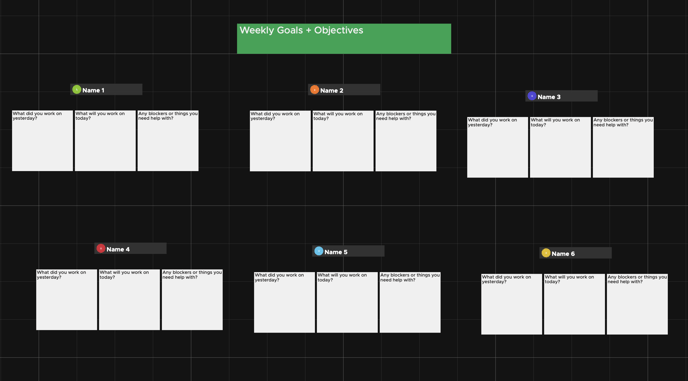A daily stand-up, also known as a daily scrum, is a brief and focused meeting where team members gather to provide updates on their progress, discuss any obstacles or challenges they are facing, and plan their work for the day.
Daily stand-up meetings, also known as daily scrums, are a common practice in agile and scrum teams to keep everyone informed about the team's progress, discuss any challenges, and plan the day's work. Using ThinkHub for your daily stand-up can enhance collaboration and transparency within your team. Here's how you can set it up:

1. Download the Stand-Up Meeting Template
Download the stand-up meeting template from ThinkHub's template library or create your own custom template for your team's stand-up meetings.
2. Update the Group Headers to Team Member Names
In the template, update the group headers to the names of team members participating in the stand-up meeting. This will help organize the information and ensure that each team member has a designated section for their updates.
3. Update Three Notes for Each Team Member
Under each group (team member), create or update three notes:
- What Did You Work on Yesterday?: Have each team member provide a brief update on the tasks they worked on the previous day. This helps the team stay informed about each other's progress.
- What Will You Work on Today?: Have each team member outline the tasks they plan to work on during the day. This sets clear expectations for the day's work and helps identify any potential dependencies or conflicts.
- Any Blockers or Things You Need Help With?: Encourage team members to highlight any obstacles or challenges they are facing that may hinder their progress. This allows the team to quickly address any issues and provide support where needed.
4. Continuing for the Week or Two-Week Sprint
For longer-term planning, you can continue using the same ThinkHub canvas for the week or two-week sprint. Each day, ask each team member to add three new notes under their respective group headers. Color-coordinate the older notes to keep a record of what happened throughout the week or sprint. This allows you to track progress over time and identify any recurring issues or patterns.
